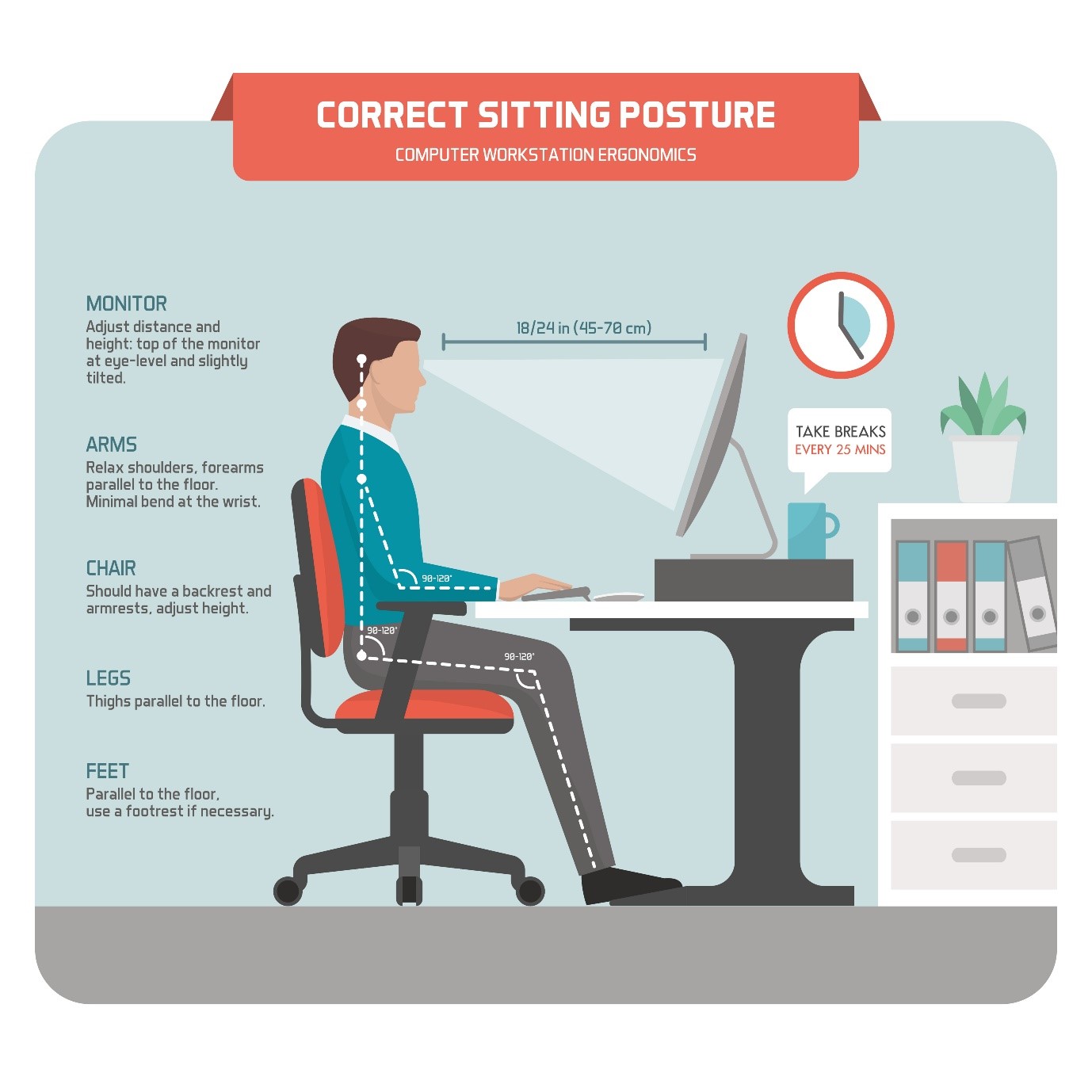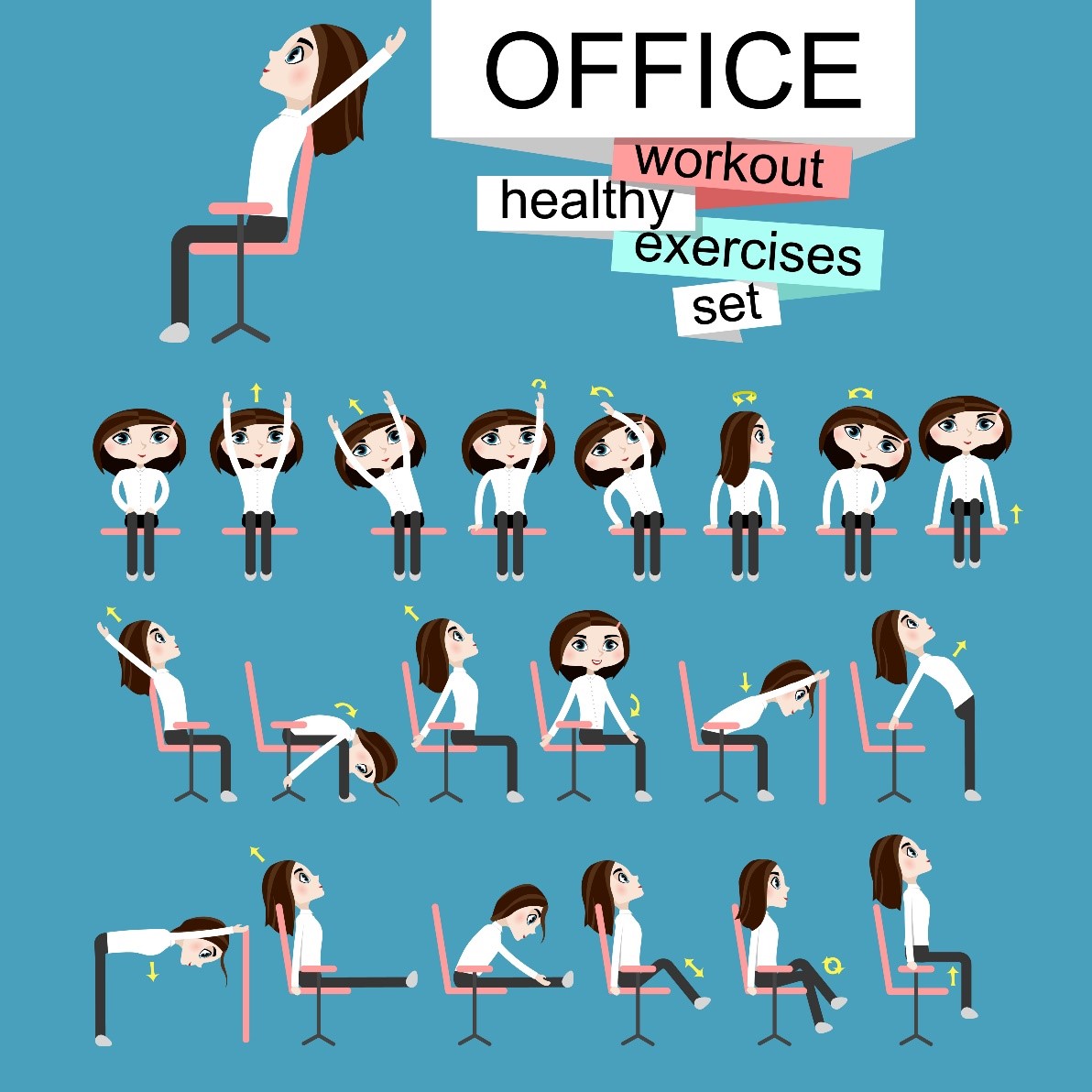During these unprecedented times many of us are being asked to work from home by our employer or because you are self-isolating.
Our home environment is very different from our office workstation. In the office we have professional desks and chairs which are designed for prolonged periods of sitting whilst working. They support our bodies and allow us to remain pain free during the long working day.
For most of the population this is not the case when working from home. We find ourselves working at the kitchen table, lying on the bed or curled up on the sofa. These set ups can have detrimental effects on our spinal position and can easily result in neck, shoulder and lower back pain. Poor posture can also lead to postural headaches.
Many of us do not have a designated office desk at home. This is made worse by using laptops rather than office PCs. The body can accommodate for this over a short period of time and many people work from home once a week with no detrimental effects. However, over an extended period this suboptimal way of working can lead to postural related pain and health issues.
This blog is designed to act as a ‘home workers survival kit’. It will provide you with tips and tricks to help you and your body deal with the stresses and strains that this current healthcare situation is thrusting upon us.
What is the correct sitting posture?
This diagram describes the optimum position while sitting and working at a desk. If you have an office space at home, then replicating the simple postural steps will allow you to work with minimal pain and discomfort.
If you do not have an office at home, then these simple tips and tricks will help to stave off posture related pain;
- There is no such thing as the right working posture! People are designed to move. Our bodies have evolved to respond to continuous movement. Taking regular breaks, getting up and moving is the most effective thing you can do to combat the risk of work-related postural pain.
- Moving increases the heart rate and wakes you up! When you are taking a phone call, working through a challenging piece of work or completing creative tasks, stand up and move regularly. You will be amazed at how this simple trick will increase your productivity.
- Try setting an alarm on your phone to get up and move every 25 minutes. Getting up and moving for even 30 seconds will have a positive impact on your body (and mind).
- Make sure you drink water regularly throughout the day. This will not only keep you hydrated but will make you get up for a toilet break!
- Using a laptop for prolonged periods of time can cause increased stresses and strains on your neck causing pain and headaches. You can combat this by purchasing a cheap Bluetooth keyboard and raising the laptop on a set of books or a box so that the top of the screen is at eye level. This is a cost-effective way of replicating an office PC.
- Place all your equipment in and easy to reach position. Stretching out your arms to use the mouse or to type on your keyboard puts extra pressure on the muscles in your shoulders. These muscles can easily become tight causing neck and shoulder pain.
- Office chairs have built in armrests. These are important to take the weight of your arms away from your neck and shoulder muscles. If you do not have a chair with armrests at home, make sure your arms are able to rest comfortably on the table whilst working.
- If you have a breakfast bar, spend some of the day standing. Setting up a standing desk workstation will reduce the effects of sitting for prolonged periods of time. Once again, try elevating a laptop on a box and using a Bluetooth keyboard for optimum positioning. Alternate between sitting and standing working positions regularly throughout the day.
- Stretch regularly. Sitting in a chair and twisting from side to side (holding the stretch for 20 seconds each way) can help reduce tension in your middle back. Bending your neck from side to side and looking over your shoulder (again holding the stretch for 20 seconds each way) can help reduce tension in your neck.
- If you do suffer from neck and shoulder pain, try using a hot water bottle or wheat bag. Warming up a muscle reduces tension and pain. Regular movement and exercise can have the same pain relieving effect.
- Try online Pilates. Research has shown Pilates to be highly effective at reducing postural pain. Complete Pilates have a team of highly experienced clinicians who are offering one-to-one and group online Pilates classes during the coronavirus crisis. For further information please contact ruth@complete-pilates.co.uk or visit complete-pilates.co.uk
If you would like further information or to book a remote physiotherapy consultation please call us directly on 02074823875 or email info@complete-physio.co.uk. Please note that we are also registered with all private medical insurance companies who are happy to fund remote physiotherapy consultations during the current COVID-19 pandemic.
Don’t let pain hold you back, book now!




